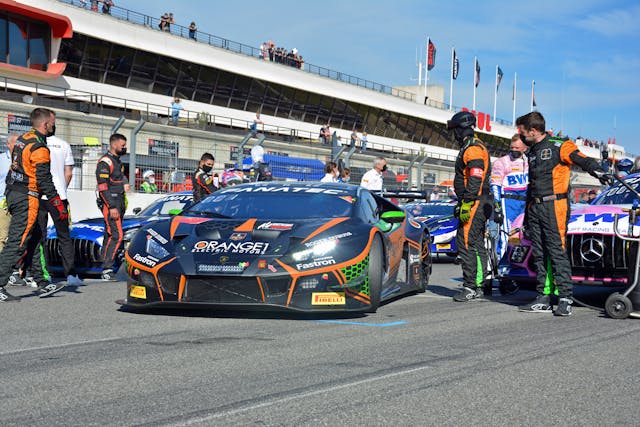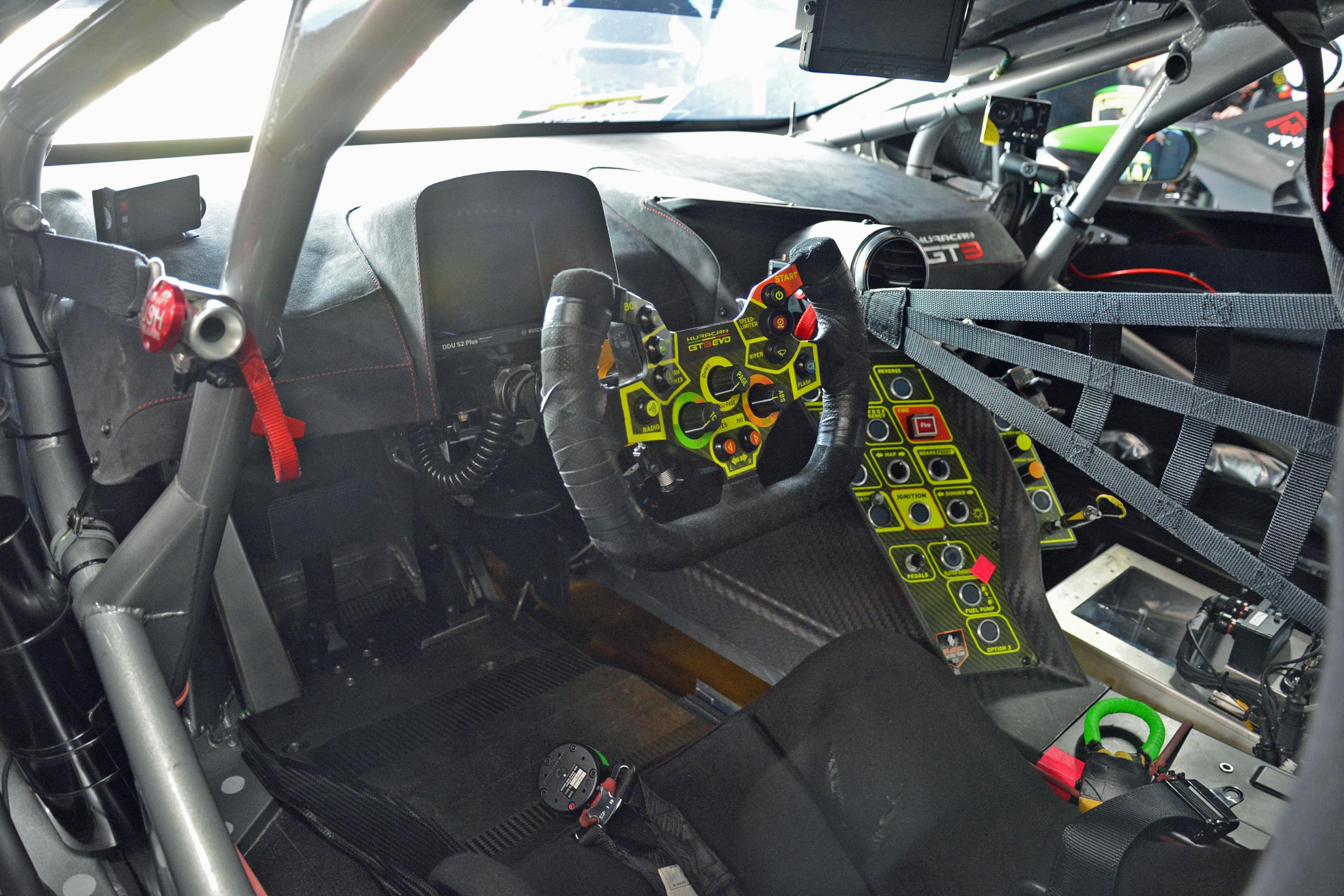Lamborghini’s racing division is making up for lost time on the track
“The real question is why we weren’t racing before,” replied Leonardo Galante, the man in charge of technical development for Lamborghini Squadra Corse, after being asked what led the company to the track. “It was quite a natural step for Lamborghini. Racing expresses what’s behind the brand, and customers expect that from us.”
Private teams have raced Lamborghini models in competitions big and small for decades—the mighty Murciélago R-GT that made its track debut in 2003 notably took many of its rivals by surprise—but the company didn’t shift its racing program into high gear (with a flick of a paddle, of course) until it launched the Super Trofeo one-make series in 2009. Galante admits the Gallardo that initially raced was relatively close to its road-going sibling; fast-forward to 2021, and the Huracán that races in the series globally has drifted far away from anything you could put plates on.
Lamborghini isn’t rooted in racing, but it’s a quick learner. It’s making up for lost time, if you’ll allow the pun.
“The principle is always the same: when you do a racing car, you want to do the simplest thing. It must be easy to diagnose, easy to repair, and easy to maintain, even during a race. We develop cars from an engineering point of view, but we also work closely with the mechanics, the folks who really put their hands in the product,” he explains.
Lamborghini builds a Super Trofeo car and a standard Huracán on the same basic chassis, mainly to keep costs in check, but the cars’ respective paths diverge there. The variant built for the track gains a full roll cage, specific body panels that can be easily and quickly removed (even the quarter panels are bolted on), beefier brakes, and its own electronic system with a loom split up into small sections to facilitate repairs, among other modifications. Chopping up the loom is a lesson Lamborghini learned the hard way. “We kept the Gallardo [Super Trofeo] close to the road car and it was a nightmare. With the Huracán, we said, ‘No, guys, let’s start from scratch.’ It might take a lot of time during the design phase, but it’ll make our lives easier down the road. It’s a different approach.”
One of the less obvious differences between the Huracán you find in showrooms and the one that lives life one lap at a time is the transmission. While regular-production cars use a seven-speed dual-clutch automatic, the Super Trofeo cars are equipped with a six-speed sequential unit provided by United Kingdom-based Xtrac. It weighs about half as much as the transmission that goes in the road car, and it’s much easier to crack open and repair in the pits. Follow the power flow upstream, and you’ll get to the same basic naturally-aspirated, 5.2-liter V-10 we know and love.
Running a one-make series allows manufacturers to call their own shots; for example, Lamborghini is free to cap power outputs where it sees fit. The V-10 in Super Trofeo cars delivers about 620 horsepower, versus 580 for the same engine in a GT3-spec car. Galante noted it’s an adventure that comes with a unique set of challenges, however.
“It’s very important to guarantee equity in the field. This is the most difficult part of the team’s job, because you can’t have cars with a [6 mph] difference. It’s crazy, that’s what we’re working on all the time. We need to guarantee that the cars are always the same. We perform checks in the factory, and every engine has a small range of acceptability.”
In contrast, Lamborghini’s GT3-spec endurance race cars (the ones that compete in events like the 24 Hours of Daytona) are quicker, lighter, more expensive, and overall more hardcore than the ones built for Super Trofeo, but they fall within strict boundaries set by FIA regulations. It’s a “big step forward,” according to Galante, one that puts Lamborghini nose to nose against Aston Martin, owner Audi, sister company Porsche, and arch nemesis Ferrari, among others. Lamborghini doesn’t operate its own team, but it provides a tremendous amount of logistical support to the privately-owned teams that compete in GT3, like China’s FFF Racing Team and Swiss-based Emil Frey Racing.
Racing is expensive, and carmakers all over the automotive spectrum are spending a mammoth amount of resources on electrification to avoid summoning a dark cloud of disapproval from European regulators, so why bother? Well, it’s an effective bait to lure new, speed-hungry customers into the fold, but it’s also increasingly a way to develop technologies that could trickle down to production cars. For example, the Huracán STO unveiled in late 2020 is fitted with an aerodynamic package related to the one worn by the Super Trofeo cars. And, the next evolution of the Super Trofeo racer that will make its racing debut in 2022 ushers in styling cues that will influence future road cars.
With nearly 100 victories in the GT3 category and years of running Super Trofeo races around the world, Squadra Corse has a lot to teach Lamborghini. Galante wouldn’t tell us what’s next, or if an expansion of the racing program is in the pipeline, but there’s at least one race series he’s not in a rush to plant the Raging Bull’s flag into: GT4.
“GT4 is too slow,” he says with a smile. “Super Trofeo is, like, 10 seconds faster.”





























